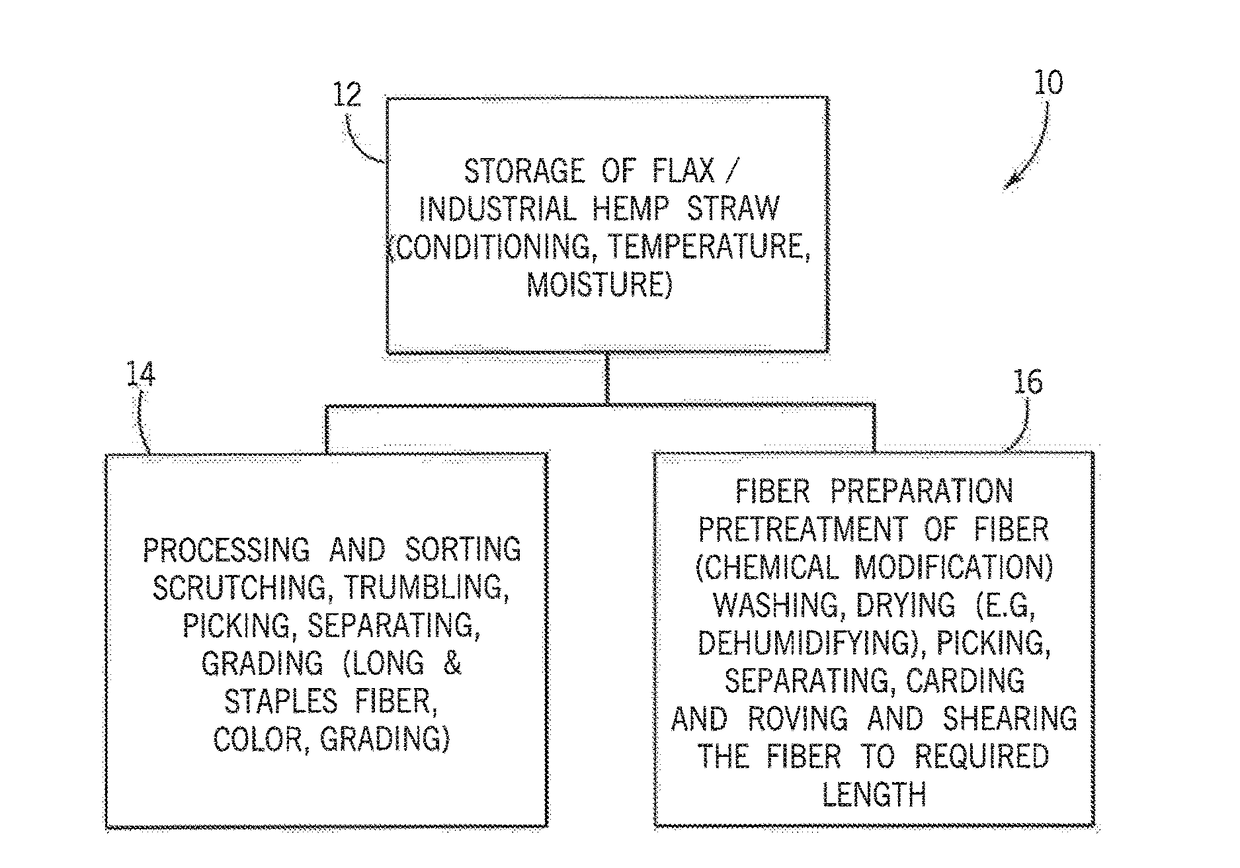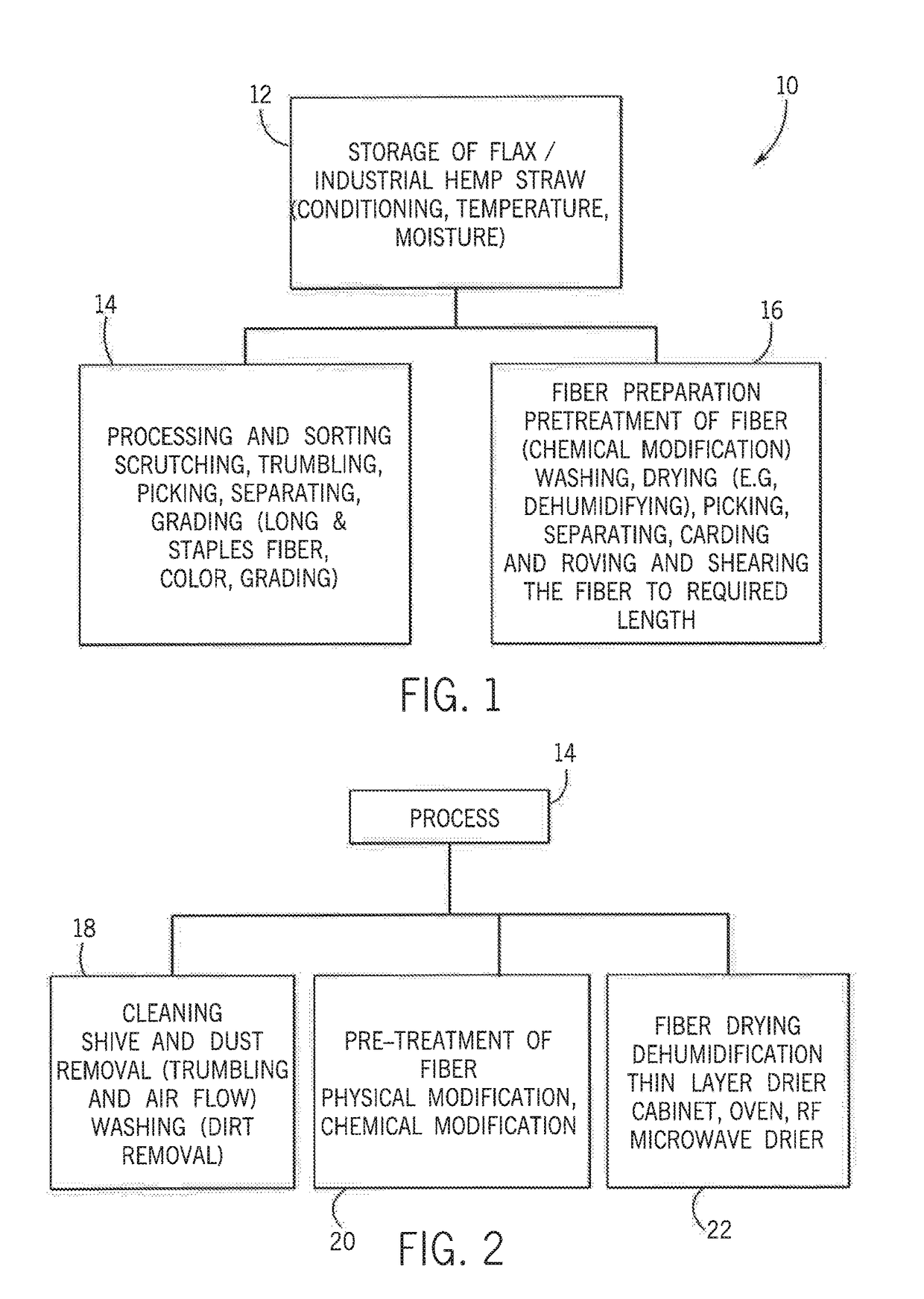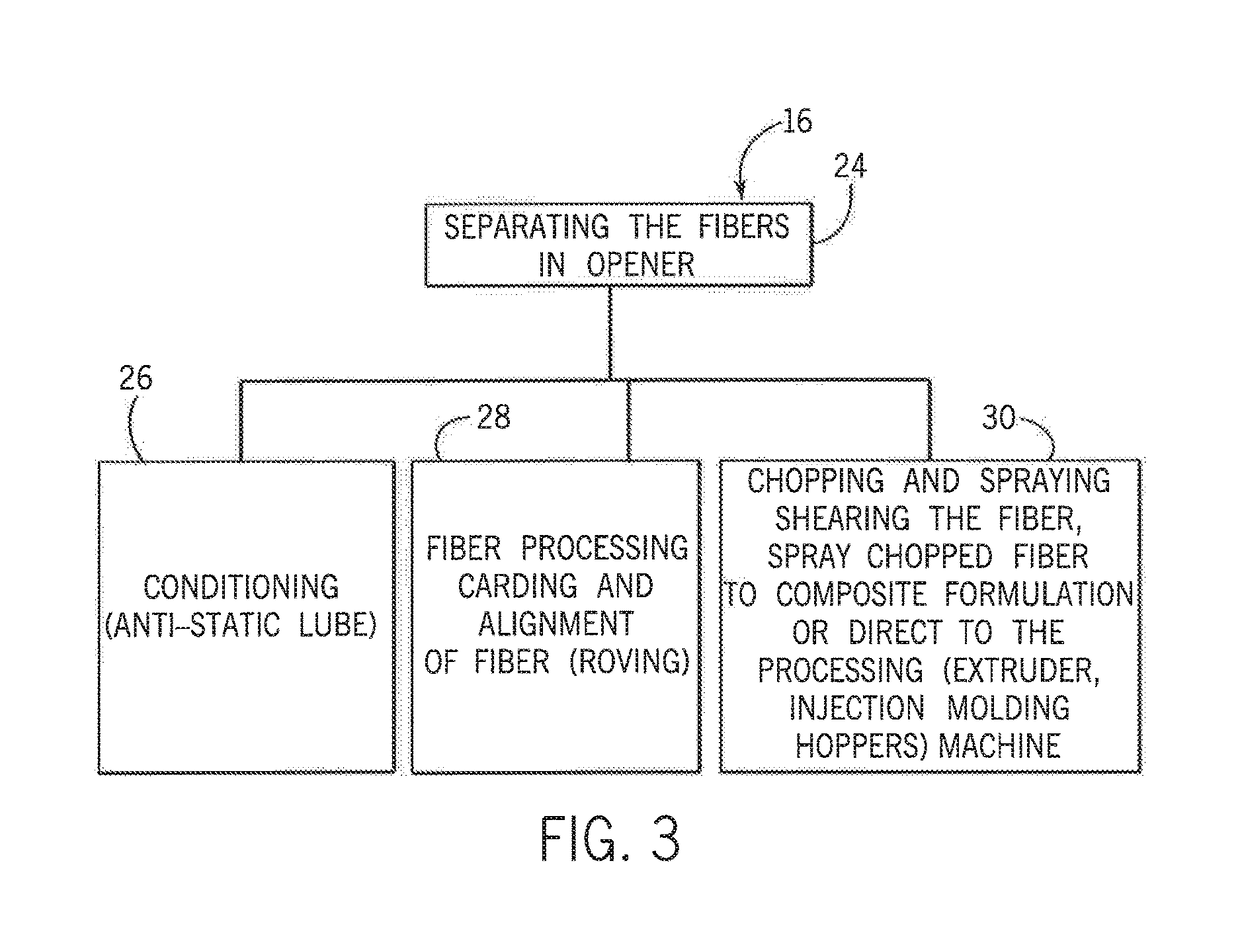Apparatus For Processing Oilseed Flax Fiber For Use In Biocomposite Materials
a technology of oil seed flax fiber and apparatus, which is applied in the direction of fibre cleaning/opening by air draught arrangement, textiles and paper, and bast fibre treatment, etc. it can solve the problems of reducing the strength and durability of the fiber, limiting the number of applications that the biocomposite material can be used, and destroying the fibers. , to achieve the effect of retaining its inherent strength
- Summary
- Abstract
- Description
- Claims
- Application Information
AI Technical Summary
Benefits of technology
Problems solved by technology
Method used
Image
Examples
Embodiment Construction
[0020]With reference now to the drawing figure in which like reference numerals designate like parts throughout the disclosure, one exemplary embodiment of a processing method provided for preparing various types of fibrous materials in order for use of the fibrous material, such as oilseed flax straw, as well as all types of fibrous materials (i.e. fiber flax, banana, jute, industrial hemp, sisal, coir) etc. in a biocomposite material is illustrated generally in FIG. 1. This process is related to the processes disclosed in co-owned and co-pending U.S. patent application Ser. No. 14 / 087,326, filed on Nov. 22, 2013, the entirety of which is expressly incorporated by reference herein. These processes include the following, as shown in FIGS. 5-6, illustrate an exemplary process for the formation of a product 116′ created using a composite material 102′.
[0021]The composite material 102′ is formed of a thermoplastic resin or material 104′, which is the term used to denote polymer materia...
PUM
| Property | Measurement | Unit |
|---|---|---|
| temperature | aaaaa | aaaaa |
| temperature | aaaaa | aaaaa |
| temperature | aaaaa | aaaaa |
Abstract
Description
Claims
Application Information
 Login to View More
Login to View More - R&D
- Intellectual Property
- Life Sciences
- Materials
- Tech Scout
- Unparalleled Data Quality
- Higher Quality Content
- 60% Fewer Hallucinations
Browse by: Latest US Patents, China's latest patents, Technical Efficacy Thesaurus, Application Domain, Technology Topic, Popular Technical Reports.
© 2025 PatSnap. All rights reserved.Legal|Privacy policy|Modern Slavery Act Transparency Statement|Sitemap|About US| Contact US: help@patsnap.com



